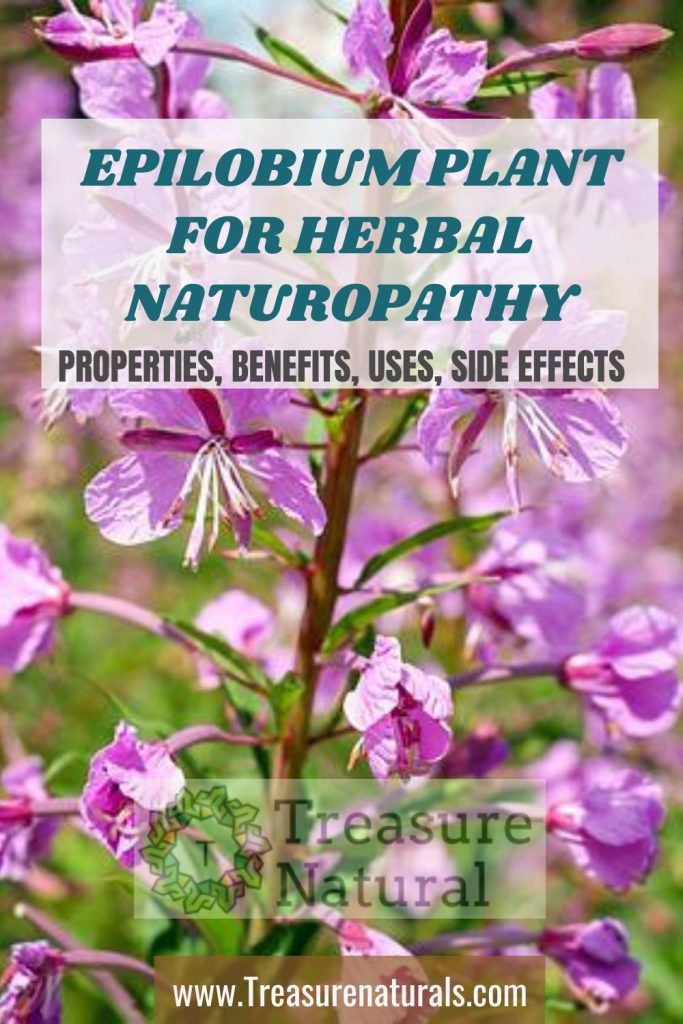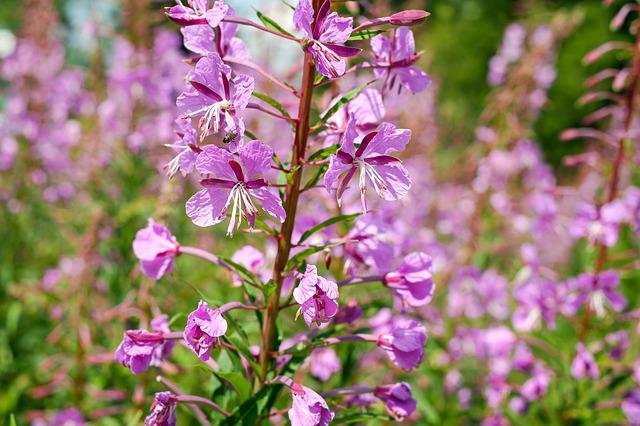
Epilobium is mainly used in the treatment of prostate disorders, however, thanks to its anti- inflammatory and antibacterial properties, it is used to fight various other pathologies. Let’s find out better.
Properties of the Epilobium
Thanks to its anti- inflammatory action, epilobium intervenes in the treatment of benign hyperplasia of the prostate and, in general, improves the urinary system. Furthermore, one of the active ingredients of the willow, myricetol-3-0-beta-D-glucuronide, has the particularity of inhibiting the release of prostaglandins.
Because it contains tannins, this plant can also fight infections and reduce bleeding, particularly in cases of excessively heavy menstruation. These components also allow to drain excess secretions, to stretch soft tissues and repair damaged ones, hence the usefulness of epilobium in conditions such as diarrhea and skin irritations (including eczema).
Epilobium owes its anti- inflammatory properties thanks to the presence of a high number of flavonoids in its composition.
Common uses for body wheeze treatments:
- Gastrointestinal problems such as diarrhea or constipation.
- Tonic for the cardiovascular system.
- Problems with the urinary tract.
- Enlarged prostate.
- Treatment of burns and wounds.
- Against stomach ulcers.
- Skin irritations.
How to use
Epilobium is used in herbal medicine for internal use for its properties: expectorant, anti-inflammatory, analgesic and astringent, while for external use it boasts properties: astringent, emollient and anti-inflammatory.
Epilobium is therefore used for internal use in the treatment of prostate adenoma, diarrhea, cough and inflammation of the airways.
For external use, Epilobium is suitable for treating dermatitis, inflammation of the oral cavity and in the treatment of canker sores.
In modern herbal medicine, Epilobium is used in the form of infusions and mother tincture. The relative doses normally recommended are equal to: 1,5-2 grams of Epilobio drug in a cup of boiling water (infusion), 40 drops of Epilobio mother tincture twice a day. In phytotherapy, the parts used in the willow tree are the leaves and flowers, but also the flowering tops. The tender leaves and young shoots of Epilobium can be used, raw or cooked, in the preparation of salads.
Contraindications of epilobium
At therapeutic doses, Epilobium does not cause particular side effects, unless there is ascertained hypersensitivity to one or more active ingredients contained in the drug. As a precaution, the use of Epilobio is not recommended during gestation and breastfeeding.
Description of the plant
Epilobium (Epilobium angustifolium), also called by the name of forest carnation, is a perennial herbaceous plant belonging to the Oenotheraceae family.
This plant has erect stems and can reach a maximum height of 2 meters. The leaves are lanceolate and very elongated. Arranged like a spike, they are characterized by circular ribs that do not end on the edges.
The flowers appear in clusters that actually grow on the seed pod, with a color ranging from purple to magenta. Above, a free dark red linear capsule, opening, releases hundreds of seeds, thus favoring insemination. The epilobium also reproduces through the roots.
Habitat of the epilobium
The willow tree is very often found in humid and slightly calcareous soils, on fields and pastures characterized by scorched earth, hence its English name “fireweed” grass of fire, given that this medicinal plant tends to grow in woods in later periods to a fire.
Background

In ancient times, Native Americans collected the young shoots of the willow tree which were then mixed with raw vegetables and eaten as a main meal since, if taken during the early stages of their life, the flowers of the willow tree are an excellent source of vitamin C and pro-vitamin A, while the stem of the plant was commonly used to prepare an ointment applicable on cuts and wounds, letting out the infected pus and allowing the area to heal.






